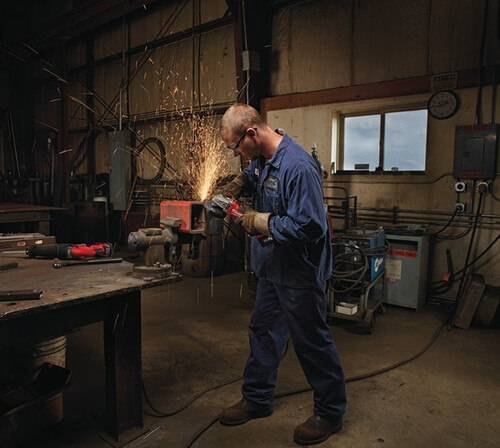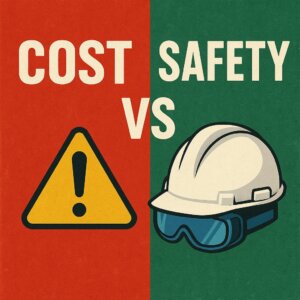Welding is a high-risk job that involves intense heat, sparks, arc flashes, and loud noise. Proper use of personal protective equipment (PPE) is critical to preventing injuries—but in real-world scenarios, many welders make avoidable mistakes when it comes to safety gear. In this blog, we’ll explore some of the most common PPE-related errors welders make and how to correct them.
1. Welding Helmet Not Fully Covering the Face
A frequent mistake is lifting the welding helmet slightly or wearing it in a way that only shields the eyes. This leaves parts of the face—like the cheeks, jaw, or neck—exposed to UV and IR radiation, which can lead to serious burns.
Tip: Always use a full-face welding helmet that complies with EN 175 standards, and ensure it sits snugly from your forehead down to your chin.
2. Wearing Non-Flame-Resistant or Synthetic Clothing
Welding sparks can easily ignite standard cotton or synthetic clothing. Worse still, synthetic fabrics can melt onto the skin, causing severe burns.
Tip: Welders should wear flame-resistant garments certified to EN ISO 11611. One-piece coveralls with internal fireproof lining offer the best protection, especially when they fully cover the arms, legs, and torso.
3. Neglecting Ear Protection
Welding doesn’t just produce visual and thermal hazards—it can also be noisy. Grinding, cutting, and hammering metal often exceed 85 decibels, which can lead to noise-induced hearing loss (NIHL) over time. Still, ear protection is often overlooked.
Tip: Use industrial-grade earplugs or earmuffs certified to EN 352, and pair them with your welding helmet to ensure complete protection.
Other Common Mistakes Include:
-
Using standard cotton gloves instead of proper welding gloves
-
Wearing low-cut shoes or sneakers instead of puncture-resistant safety boots
-
Failing to inspect PPE regularly for signs of wear, damage, or degradation
Summary: Safety Is in the Details
Every detail matters when it comes to welding safety. Incorrect PPE use or skipping protection for one area of the body can lead to serious injuries in high-heat, high-pressure environments. Regular safety training, certified protective gear, and routine equipment checks are essential to keeping welders safe on the job.








